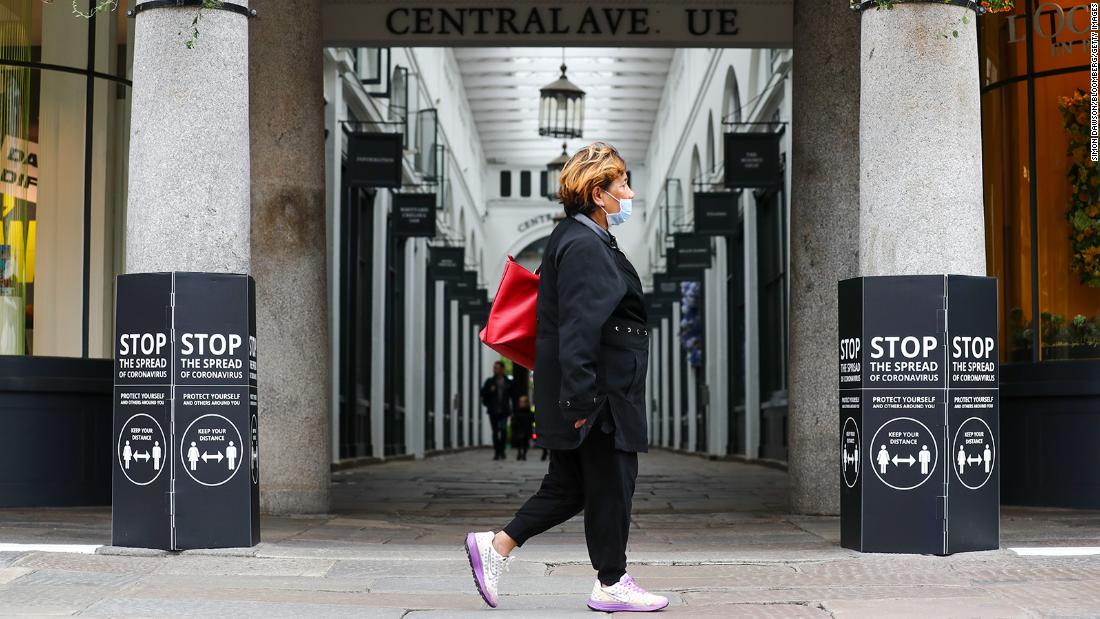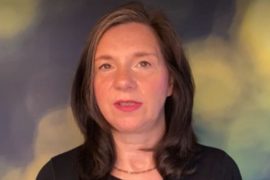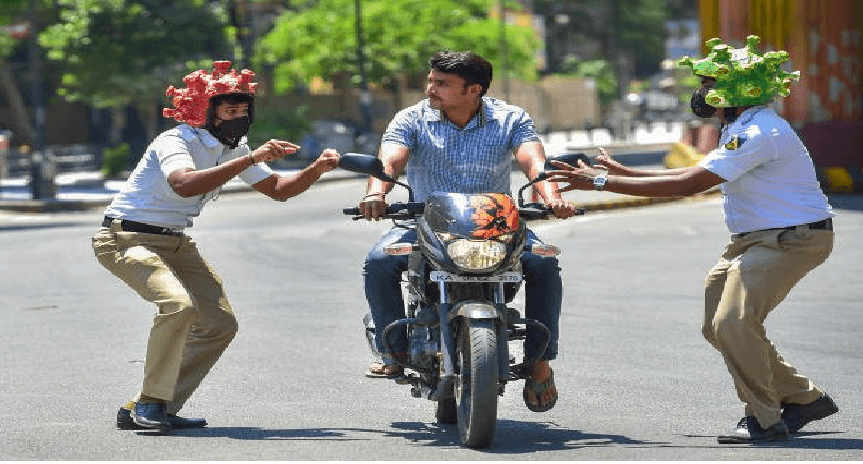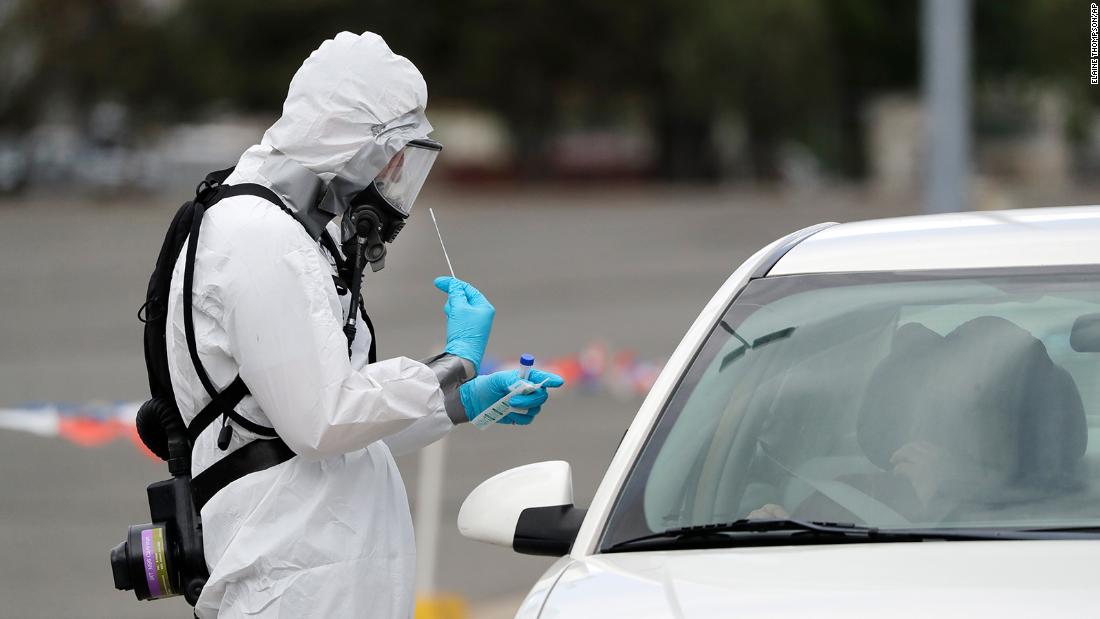This despite the UK being one of the world’s worst-hit countries by coronavirus — it stands third behind Brazil and the United States — with almost 45,000 fatalities.
And in the United States, a new study showed that one of the main drivers of cases now could be “silent spreaders,” or people who are asymptomatic or presymptomatic.
The report, published in the Proceedings of the National Academy of Sciences, found that asymptomatic or presymptomatic hosts could be responsible for half of cases, highlighting how masks could be useful in preventing the spread of the virus.
“We have now identified convincing decades-old and apparently forgotten evidence, from the time when surgical masks were made of cloth and were reusable, showing that they help to prevent transmission of airborne infectious agents. There is now even some evidence that masks might directly benefit the wearer,” its author, Paul Edelstein, Emeritus Professor of Pathology and Laboratory Medicine at the University of Pennsylvania, said.
Edlestein explained: “There are people without symptoms going about their daily business who are unknowingly breathing out droplets that are carrying the virus. If they had their faces covered the majority of those droplets would be caught before they can infect other people. Wearing face coverings can help save lives and prevent disabling illnesses.”
So if the basics are “simple to understand,” as Edlestein put it, why is Britain so reluctant to latch onto masks?
Becoming an outlier
It found that in late April in the UK around 25% of people wore face masks or coverings in public places. This is staggeringly low compared to 83.4% in Italy and 63.8% in Spain in the same period.
“I don’t regret that,” Dr. Anthony Fauci, the director of the National Institute of Allergy and Infectious Diseases, said during congressional testimony last week. “At that time, there was a paucity of equipment that our health care providers needed… we did not want to divert masks and PPE away from them.”
“People may rightly ask why you have to wear a mask on a train but not in a shop. If guidance is inconsistent people will follow their own preferences,” Ramakrishnan said. He argued British people might “not really understand the benefits or are not convinced of them.”
There have also been cracks in a UK-wide approach on masks, with the devolved nations having the power to decide their own coronavirus measures. Northern Ireland is in line with England in mandating masks on public transport but not shops. Scotland has gone one step further and made it mandatory to wear face coverings in shops from July 10. In Wales, masks are not mandatory in shops or on public transport.
In Parliament on Tuesday, UK Health Secretary Matt Hancock said the government will review guidance for whether the public should wear face masks in supermarkets and retail shops in England.
When asked for a review timeframe, a government spokesperson at the Department of Health told CNN: “As we ease lockdown measures, face coverings can help us protect each other and reduce the spread of the disease if people are suffering from coronavirus, but not showing symptoms. We continue to advise individuals to wear face coverings in enclosed public spaces where social distancing is not possible.
“Everyone should maintain a 2-meter distance wherever possible. Where this is not possible wearing a face covering is one of the ways people can manage risk at a 1-meter distance.”
Although the uptake of face masks or coverings may have increased in the UK since late April, the Set-C report highlights how many countries implemented a policy requiring the general public to wear face masks and coverings in all public places much earlier, by mid-March 2020.
Taiwan, South Korea and mainland China, all places with widespread mask use, have seen greater success in preventing major outbreaks or reining them in once they begin.
or
As second and third waves begin to emerge in countries that have eased up coronavirus restrictions, mask wearing has up until this week been shunned and even ridiculed by the leaders of the worst hit countries — the US and Brazil — as they struggle to escape a devastating first wave of the pandemic.
President Donald Trump had refused to wear a mask in public for months until a visit to Walter Reed National Medical Center on Saturday. The photo opportunity came after some of the President’s aides practically begged him to agree. It is hoped it will encourage skeptical Trump supporters to do the same. Meanwhile, President Jair Bolsonaro is being sued for removing his mask during an interview in which he announced that he has the coronavirus.
The University of Washington’s Institute for Health Metrics and Evaluation (IHME) gives two versions of forecasts for the US: one in which everyone wears masks, and one in which they don’t. This week the IHME model projected as many 208,000 American coronavirus deaths by November 1, but just under 163,000 if most people wear a face mask to help contain the spread of the virus.
Why the resistance?
“To understand why people don’t wear face coverings it is essential to examine behavioural factors such as the public’s understanding about masks and how to wear and re-use cloth coverings,” said Melinda Mills, Director of the Leverhulme Centre for Demographic Science at the University of Oxford and lead author on the SET-C report.
“What is clear is that it isn’t the public’s fault for not wearing masks in the UK. Rather, consistent policies and effective public messaging is vital, which have even differed across England, Scotland and Wales,” Mills argued.
Notably, UK Prime Minister Boris Johnson — who was hospitalized in intensive care with the virus — had not, until Friday, worn a mask in public, yet Scottish First Minister Nicola Sturgeon had.
Mills said people in countries like Italy and Spain, without a previous history of mask wearing, have “rapidly adopted face coverings during the Covid-19 period largely because the authorities provided them with a consistent policy and clear guidelines to understand why they should wear them.”
Spain, for example, which has recorded more than 28,000 deaths, has legally required everyone over the age of six to wear face masks indoors and outdoors in public spaces when a minimum two-meter distance is not possible since May 21. In June, the country’s Prime Minister Pedro Sanchez ordered that this remain the case even after the country’s state of emergency ended on June 21.
The Set-C report, which states consistent and effective public messaging is “vital” to public adherence to wearing face masks and coverings, highlights a UK government tweet on June 27. The report said the “face coverings make the shop safer” message in the tweet was good for its “altruism” message but bad because it focused only on protecting others and not self protection. The campaign image featured an older woman, who the report says is already in the vulnerable group and less likely to break the face covering advice.
The report also concludes that a lack of uptake of face masks and coverings in the UK may also be attributed to factors such as an “over-reliance on an evidence-based medicine approach,” “inconsistent and changing advice from supranational organizations (WHO, European Center for Disease Prevention and Control),” and “supply concerns of PPE shortages of surgical face masks.”
It’s not too late
Since then, the consultant in infectious diseases at Cambridge University hospitals in England and professor at the Tsinghua University School of Medicine in Beijing has moved to the US to take up a new post as associate professor of experimental medicine at the University of California San Francisco. He’s noticed masks are “much more visible” in the US than the UK, and he puts that down to the “establishment” unifying around masks early on in the pandemic.
In the US “many shops here have not hesitated in mandating masks if you want to go and use their store… shops don’t seem to be suffering as a result,” he said in a phone interview with CNN.
Javid believes the UK has indeed become somewhat of a mask experiment “control group,” “certainly compared with most European countries,” although he points out the Netherlands and the Nordic countries also have very low uptake of face mask use. There are confounders, he said, “because of the UK’s very long lockdown and… because the UK was hit very hard… case counts are really dramatically falling in the UK now, so it’s hard to disentangle.”
“I think there is reasonably compelling evidence that states that mandated masks earlier cut down their transmission rates more quickly in the upswing phase of the outbreak,” he added.
Javid thinks the UK government’s attempt to make the mask mandate as loose as possible has meant “a very muddled and fairly watered-down message.”
“They were so worried about securing PPE supplies, so then the focus shifted to face coverings and the reality is not all face coverings are created equal. That’s just the bare bones truth, a loose scarf is always going to be less effective than a well-fitted, well-made cloth mask,” Javid argued.
“If you are going to have a lowest common denominator message that any face covering will do it’s then hard to hand on your heart and say this is going to protect you. Whereas, actually, a well made cloth mask will protect you. I think that’s incontrovertible.”
He said “in terms of economics masks are one of the most cost-effective interventions we can have” in the fight to stop the spread of coronavirus. He is not in favor of “perpetual lockdown” and believes masks are one way of trying to get out of lockdown quicker but they are not the beginning and the end of the pandemic. “This isn’t a simple solution, it’s just one part of a package.”
After a deadly first wave of the virus, Javid believes “it’s not too late” for the UK. “Now is a great time to increase our mask usage because it might allow us to open up even more and more safely.” This is a claim echoed by Royal Society President Ramakrishnan, who said: “The virus has not been eliminated, so as we lift lockdown and people increasingly interact with each other we need to use every tool we have to reduce the risk of a second wave of infection.”
Will we ever see Brits wearing masks in pubs? “The reason why pubs and clubs are higher risk activities is because you are much more likely to be engaging in speech and we know that speech is associated with transmission,” Javid said. “Realistically how many people will wear a mask, take it off for a quick sip of their pint and then put it back on again straight away? I just can’t see that happening.”

Reader. Organizer. General creator. Zombie fanatic. Alcohol advocate. Food junkie. Bacon ninja.





